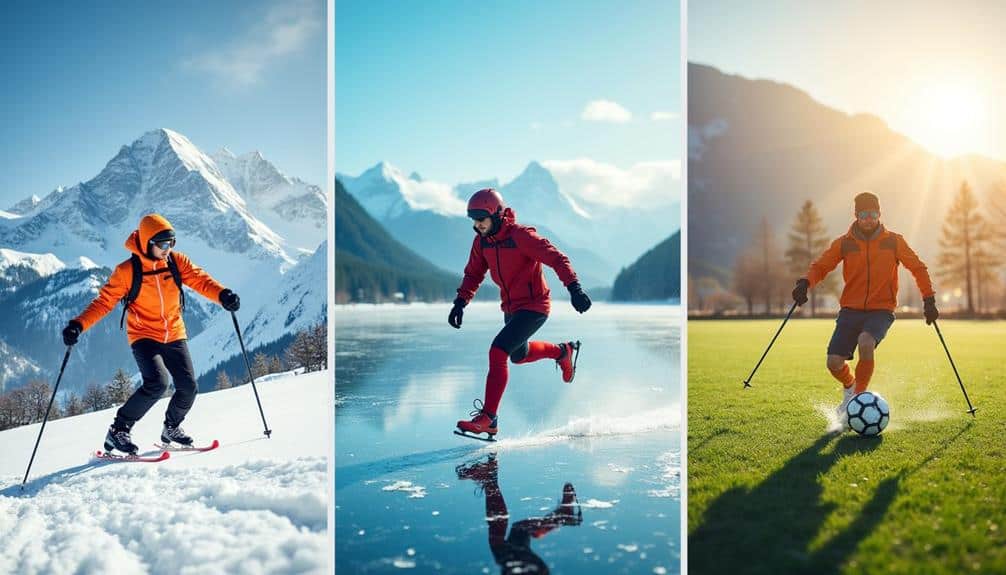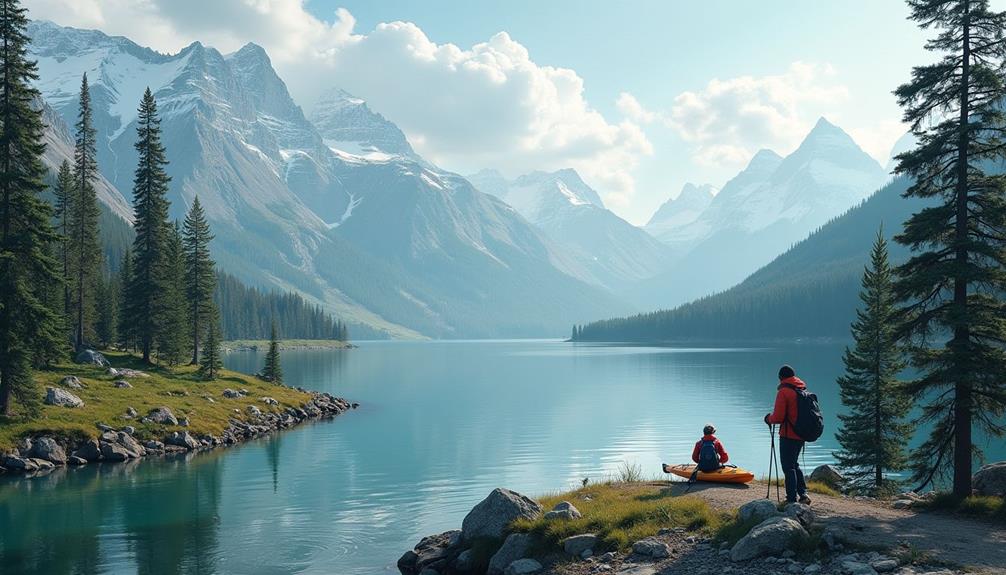Russia’s strategy for promoting year-round physical activity stands out for its thorough integration of government initiatives, community programs, and the utilization of varied natural landscapes. By mandating physical education in schools and providing subsidies for sports facilities, the state aims to embed a culture of fitness across all demographics. Public awareness campaigns further bolster these efforts, while seasonal sports activities take full advantage of Russia’s diverse climate. The development of accessible fitness infrastructure not only supports individual well-being but also strengthens social cohesion. But how effectively are these strategies being implemented, and what challenges lie ahead?
Government Initiatives

In recent years, the Russian government has launched a series of initiatives aimed at promoting physical activity across the nation. Central to these efforts are robust policy frameworks designed to integrate physical activity into daily life. The government has enacted legislation mandating physical education in schools and subsidizing sports facilities to guarantee accessibility for all citizens. These policies seek to create an environment conducive to regular physical activity, recognizing its critical role in public health.
Moreover, increasing public awareness has been a cornerstone of these initiatives. The government has employed various media channels and public campaigns to educate citizens about the benefits of physical activity. By leveraging social media, television, and community outreach programs, these campaigns aim to instill a culture of fitness and well-being. Educational programs in schools further reinforce the importance of maintaining an active lifestyle from a young age.
Through these extensive policy frameworks and heightened public awareness efforts, the Russian government aspires to foster a healthier population. These initiatives not only address the immediate benefits of physical activity but also aim to mitigate long-term health issues, thereby contributing to the overall well-being and productivity of the nation.
Community Programs
Building on the foundation established by government initiatives, local communities play a pivotal role in promoting physical activity through targeted programs. These community-driven efforts are essential in facilitating widespread participation and fostering a culture of health and wellness across all age groups.
A primary focus of community programs is youth engagement. By organizing sports leagues, after-school activities, and fitness challenges, local authorities aim to instill healthy habits from a young age. Schools and community centers often collaborate to provide accessible venues and resources, thereby encouraging children and teenagers to participate in various physical activities. This early engagement not only promotes physical health but also aids in the development of teamwork and leadership skills.
Social inclusion is another critical component of these programs. By designing activities that cater to diverse populations, including the elderly, individuals with disabilities, and socioeconomically disadvantaged groups, community programs facilitate equitable access to physical activity.
Inclusive events such as community walks, adaptive sports, and intergenerational fitness classes help break down barriers and promote a sense of belonging among participants.
Seasonal Sports

Seasonal sports offer a unique opportunity to engage the population in physical activities that are both enjoyable and beneficial to health. In Russia, the diverse climate provides an excellent platform to promote a wide range of seasonal sports, from winter sports to summer activities, ensuring that physical activity remains an integral part of daily life throughout the year.
During the colder months, winter sports such as ice skating, skiing, and snowboarding become highly popular. These activities not only contribute to cardiovascular health and muscle strength but also provide a social outlet, fostering community engagement.
Winter sports are widely accessible in many regions of Russia, with numerous ice rinks and ski resorts catering to both amateurs and professionals.
As the seasons shift, summer activities take precedence. Sports like swimming, cycling, and hiking encourage citizens to spend time outdoors, benefitting from the extended daylight hours and warmer weather.
These activities enhance cardiovascular fitness, muscle endurance, and mental well-being.
Fitness Infrastructure
Russia’s commitment to promoting physical activity extends beyond seasonal sports to the development of extensive fitness infrastructure. This initiative underscores the importance of creating environments that encourage year-round physical activity, guaranteeing fitness accessibility to all citizens.
Urban design plays a pivotal role in this vision, as cities and towns are being reshaped to integrate fitness opportunities seamlessly into daily life. Modern urban planning in Russia increasingly includes the construction of multi-functional sports complexes, outdoor gyms, and pedestrian-friendly pathways.
These facilities are strategically placed to maximize convenience, thereby reducing barriers to regular exercise. In addition, public parks are being equipped with fitness stations and jogging tracks, making physical activity more inviting and accessible.
The focus on fitness accessibility aims to democratize physical activity, targeting not just urban but also rural populations. By investing in community-based fitness centers and recreational facilities, Russia guarantees that even remote areas benefit from these improvements.
The integration of fitness infrastructure into urban design is a demonstration of Russia’s holistic approach to public health, recognizing that a well-planned environment is vital to fostering a culture of continuous physical activity.
Natural Landscapes

Amid the efforts to enhance urban fitness infrastructure, the vast natural landscapes of Russia offer a complementary avenue for promoting physical activity. Encompassing vast forests, mountain ranges, and rivers, Russia’s diverse ecosystems provide a rich setting for a variety of outdoor activities.
Whether it is hiking in the Ural Mountains, kayaking on the Volga River, or skiing in Siberia, these activities not only encourage physical exercise but also allow individuals to immerse themselves in the country’s natural beauty.
The ecological benefits of engaging in outdoor activities in these natural landscapes are substantial. To begin with, such activities help reduce the carbon footprint compared to indoor, energy-intensive gym environments.
Furthermore, promoting physical activity in natural settings fosters a sense of environmental stewardship among participants, encouraging them to protect and preserve these areas.
Finally, exposure to natural environments has been shown to have mental health benefits, including reduced stress and improved mood, which are critical for holistic well-being.
Incorporating Russia’s natural landscapes into the national strategy for physical activity not only leverages the country’s ecological assets but also promotes a sustainable and balanced approach to health and fitness.




